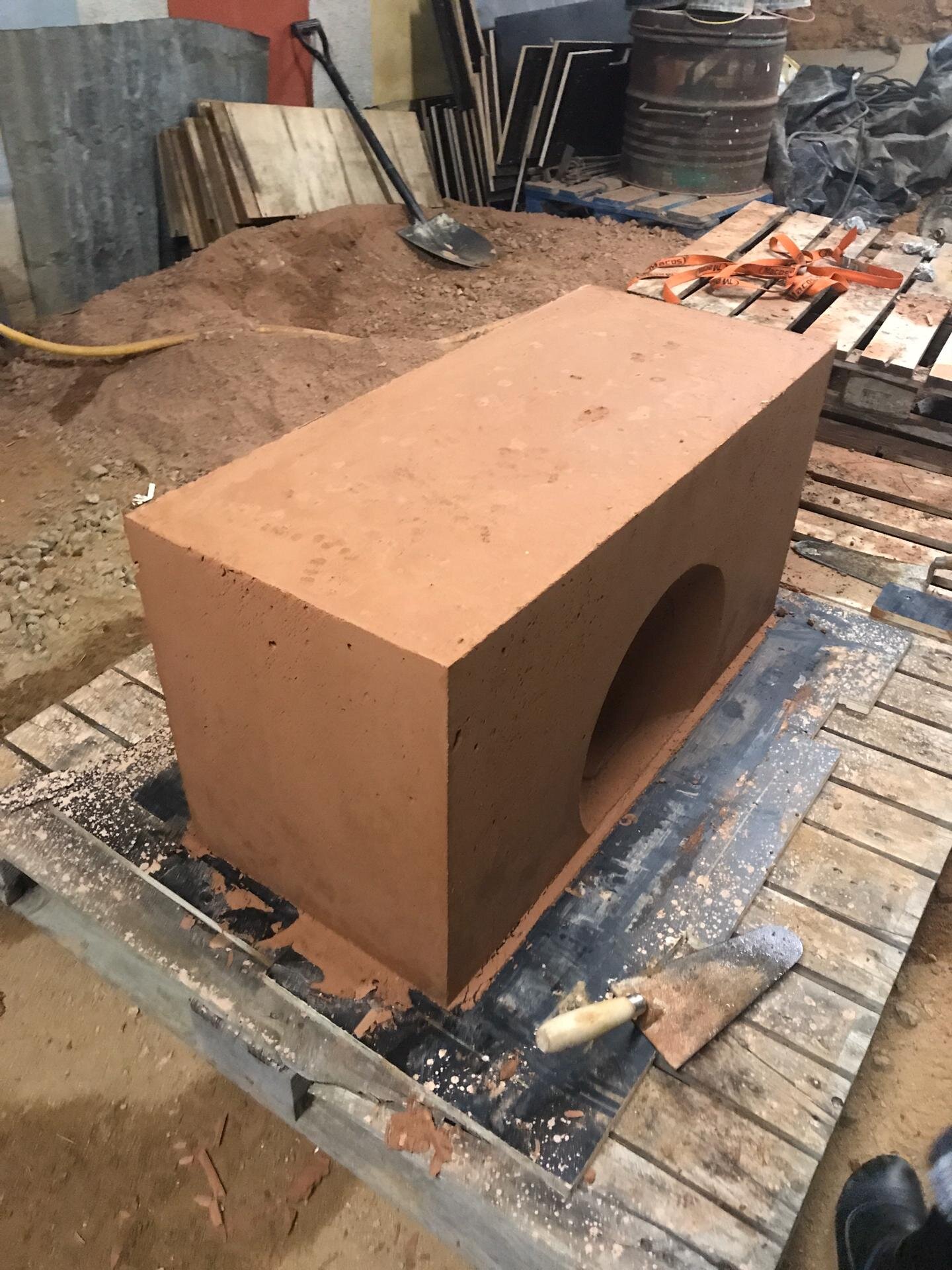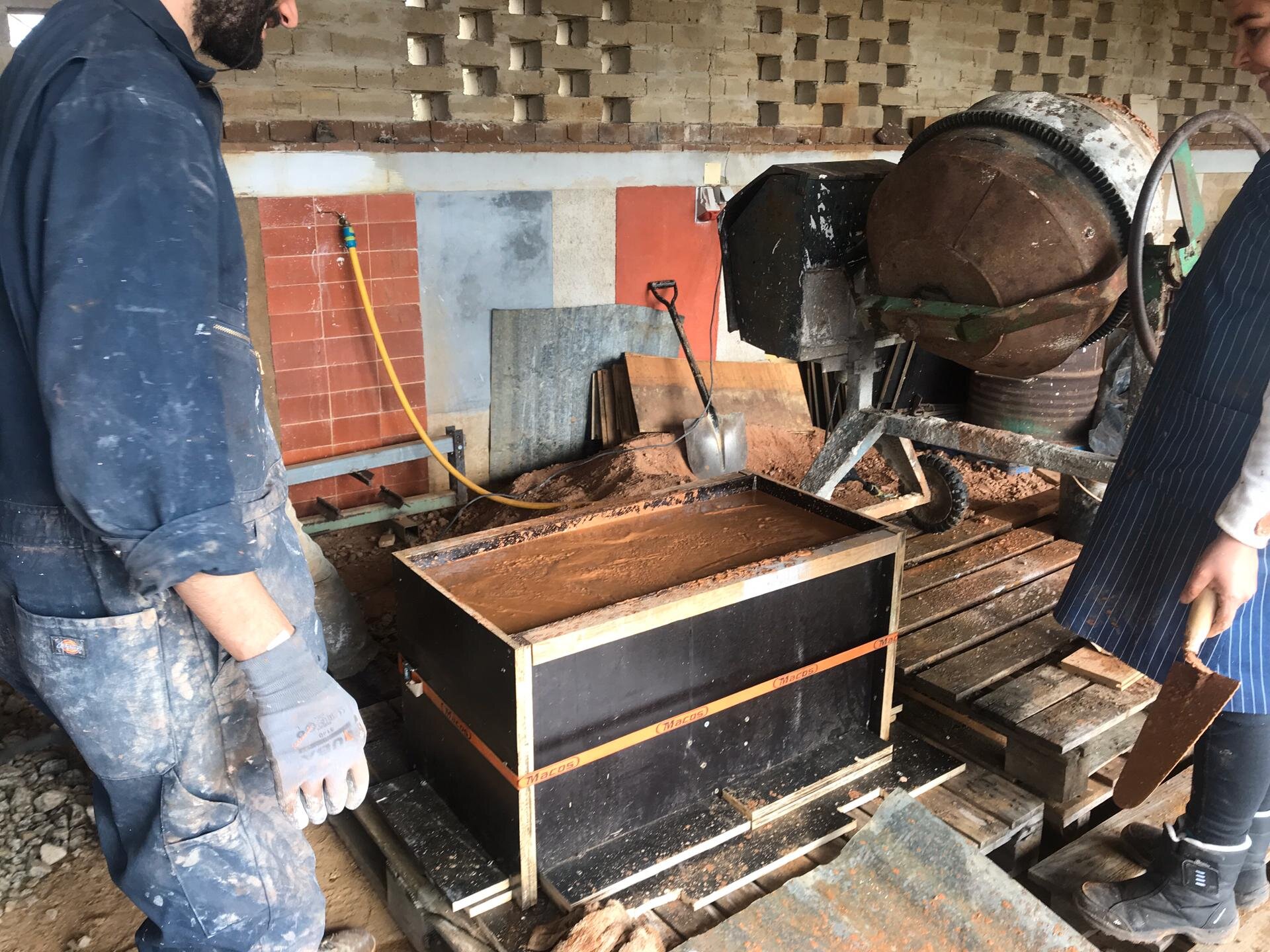Poured earth: an alternative to cement concrete ?
Among the elements entering in conventional concrete's composition - gravels, sand and cement - this last one (cement) is responsible for the main part of the CO2 emissions caused by the production of concrete. Indeed, cement as a binder only represents 12% in mass of the concrete mix, but it is responsible for 98% of the CO2 emissions of concrete production. At a global level, the impact is huge: cement production is responsible for around 5% of CO2 emissions [1], which is as much as air traffic, for example.
Therefore there is an emergency in finding an alternative to cement concrete and one of the solutions may be just under our feet: earth material! Even if it's compressive strength isn't equivalent to concrete's, in a lot of cases it can be enough and thus represent a real alternative.
Earth material is actually a type of concrete as it is made of grains (gravels, sand and silts) stuck together by a natural binder, the clay particles. Compared to cement concrete, earth material – or let's say “clay concrete” - offers in principle much more environmental benefits: it's totally recyclable if not stabilized, it has a low environmental impact as it is not fired, it provides excellent hygrothermal regulation to interior spaces, etc..
Earth is made of grains of different sizes (gravels, sands and silts) united together by a natural binder: clay (Picture: Tânia Teixeira, Oficinas do Convento)
For millennia in many different places of the world, earth material has been used through different techniques as rammed earth, adobes but also wattle-and-daub (or “quincha”) and cob.
Explain why these ways of building are today disappearing is complex and multifactorial, but one of the reasons for sure is the progressive industrialization of the building sector since last century, causing therefore the abandon of traditional craft techniques associated to high intensity manual labour and consequently not compatible with market rules and rentability requirements.
In a village of Extremadura (Spain): separation wall built with rammed earth (on the left) and cement concrete blocks (on the right). (Picture: Lucile Couvreur, miga / ACTYVA)
But if rammed earth (humid earth compacted into a formwork) has been substituted by cement concrete (liquid cement mortar poured into a formwork) in order to save time, couldn't we pour liquid earth into a formwork keeping the benefits of cement concrete (quick execution) without its disadvantages (high environmental impact) ? The answer is yes, and the technique is called “poured earth”, “liquid earth” or “clay concrete”, a quite new technique which is currently being implemented in several parts of the world (click here to see the video of a poured earth building site in France).
The first experiments date from the 90's in Nevada (US) where a couple of building sites using a technique called “cast earth” were documented [2], a promising clay concrete technique, nevertheless requiring to add a 15% of gypsum to the earth in order to solidify the mortar and be able to take the formwork out (one of the main challenges of poured earth technique). At the end of the 2000s in Grenoble (France), the architects and builders from the cooperative Caracol started to implement the technique. Focused at the beginning in using it for repairing the local built heritage made out of rammed earth, they shortly after passed to use it for the realization of new walls and slabs in several building sites (see example here). The material used is local earth reformulated with sand and gravels and 2 to 4% of Portland cement and a small quantity of synthetics dispersing products (used to increase the liquidity of the mortar without adding water).
From 2010 to 2013, Caracol cooperative collaborates with different agents of the academic and entrepreneurial worlds (Carrières du Boulonnais, CTMNC, AKterre, ENTPE, INSA Lyon, CRAterre, ENTPE y amàco-Les Grands Ateliers) in a investigation project co-financed by the french Ministry of Ecology and titulated Béton d’Argile Environmental (B.A.E.) [3] which highly contributed to better understand the issues connected with the implementation of the technique and lead to the construction of several pilot building with load bearing and non-loadbearing poured earth elements (see examples here and here)
Since the project completion, some research on this topic is still being conducted at INSA Lyon, leading to important discovering like for example the use of gelified alginates as alternative to cements in poured earth [4]
In addition the contributions of ETH Zürich on this topic must be stressed, in particular the recent publications on dispersion and stabilization of clay concretes.[5]
All these investigations wouldn't make sense without the existence of initiatives to bring them to the building sites, like Materr’up (France) o Oxara (Switzerland), a start-ups offering services in formulation and production of clay concrete, in particular on the base of soils provided from excavations.
Samples of clay concrete (poured earth) and prototype realized with local earth in Montemor-o-Novo (Portugal). (Picture: Tânia Teixeira, Oficinas do Convento + Lucile Couvreur, miga / ACTYVA)
In the Iberian peninsula things are starting to move on recently. For a few years, the Universitat politécnica de Valencia is studying the influence of carrube tannins on different types of pure clays. On another hand, Oficinas do Convento association (Portugal) and miga / ACTYVA (Spain) started in 2019 to formulate clay concrete with local earth with the aim to realize 1:1 scale experimentations [6]. Both organizations are currently collaborating on the preparation of a workshop on this topic that will take place in october 2021 in Montemor-o-Novo (Spain) in the framework of BI0N#2. Subscribe to our newsletter to keep up to date!







